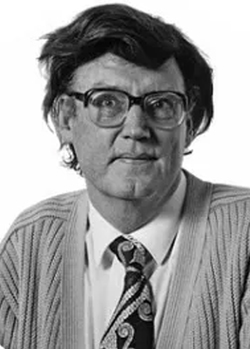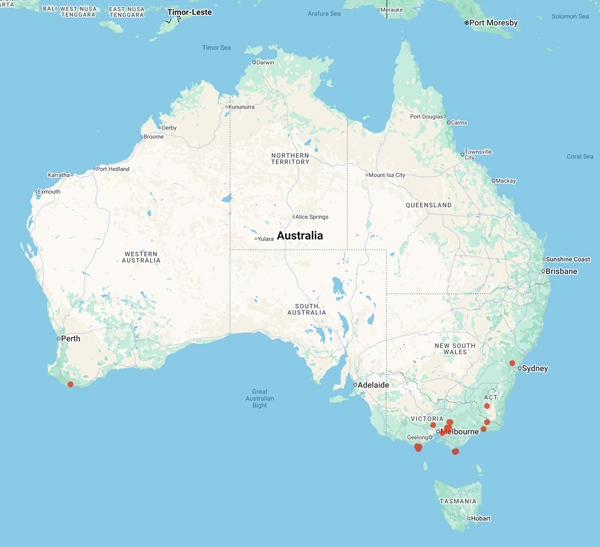
Council of Heads of Australasian Herbaria
Australian National Herbarium
Biographical Notes
 |
Council of Heads of Australasian Herbaria |
 Reid, Derek Agutter (1927 - 2006)
Reid, Derek Agutter (1927 - 2006)He was born on September 2, 1927 in Leighton Buzzard, Bedfordshire, England, UK;
he died on 18 January 2006 in the UK.
He was educated at Cedars School and the University of Hull, where he studied geology and botany. He gained his Doctor of Philosophy from the University of London in 1964, for a thesis (later published) on stipitate stereoid fungi.
In 1951, he became assistant to R.W.G. Dennis, head of mycology at the Royal Botanic Gardens, Kew. On Dennis' retirement in 1975, Derek Reid took over his position and remained at Kew till his own retirement in 1987.
Derek Reid was a naturalist and enthusiastic field mycologist, leading regular fungus forays in his native Bedfordshire for over 40 years, as well as tutoring fungus identification courses at Field Studies Centres, and evening classes at the University of London.
He published a popular field guide to British mushrooms and toadstools in 1980.
He was also able to travel far more widely than his predecessors at Kew, visiting and collecting fungi in continental Europe, the United States, the West Indies, Australia (1976), and South Africa. His particular interest in South African fungi led to several joint papers with his fellow mycologist Professor Albert Eicker at the University of Pretoria.
In 1989, after his retirement from Kew, Reid stayed for some while in Pretoria, as Visiting Professor at the university.
Derek Reid's main interest was in the taxonomy of fungi, especially (but not exclusively) the Basidiomycota.
Reid was a talented artist, and illustrated his own papers. Many of his paintings of rare fungi were published in his series 'Coloured Icones of Rare and Interesting Fungi' in the journal Nova Hedwigia. He also created paintings depicting several type specimens and other fungi in the Kew Herbarium, which are now preserved in collections at Kew.
Source: Extracted from:
https://prabook.com/web/derek_agutter.reid/643061
https://en.wikipedia.org/wiki/Derek_Reid
Portrait Photo: Yahoo image search.
Data from 56 specimens
